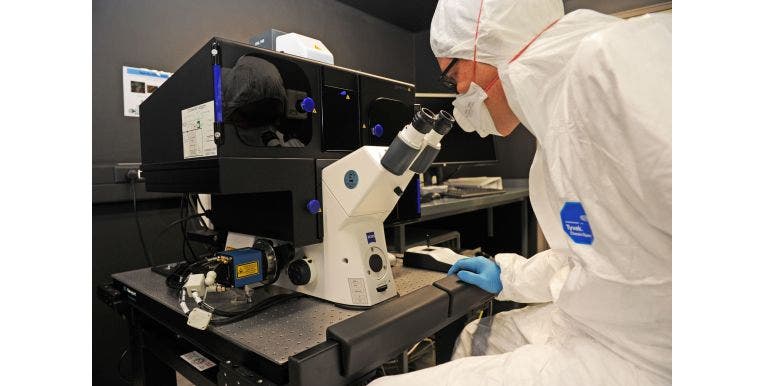A Comprehensive Microscope Buying Guide | Westlab Canada
Microscopes are crucial equipment in laboratories for scientific research and experimentation. These precision instruments magnify specimens or materials at high resolution, permitting researchers to study intricate details far beyond the limits of human sight.
Microscopes have unveiled countless scientific revelations, from the existence of microorganisms invisible to the naked eye to the precise structure of cells, tissues, and materials at the molecular and atomic levels. They are essential for various research, diagnostic, and industrial applications.
This blog is a complete microscope buying guide that helps you to purchase the best microscope for your laboratory.
Microscope Buying Guide - Which Factors to Consider While Buying a Microscope?
Microscopes are essential for various fields ranging from education to research, medicine, and industrial inspection. Choosing a suitable microscope can be a challenging task as it depends on different factors such as types, specifications, and cost of a microscope.
This microscope buying guide will help you choose the right microscope based on your specific needs and budget.
Five Steps of a Microscope Buying Guide
Choosing a suitable microscope for your lab requires careful consideration of your specific requirements and available options. Here are five steps to guide you through the process:
Understand Basic Types
Before diving into the specifics of different microscope models, it's essential to understand the basic types of microscopes. There are three main types of microscopes, including compound microscopes, stereo microscopes, and electron microscopes. Each type has its specific uses and advantages.
Compound Microscope
Compound microscopes are also called light microscopes. These are the most common microscopes used in classrooms and labs. They use light to illuminate the sample and have multiple lenses to magnify the image.
Stereo Microscope
It is also known as a dissecting microscope. Stereo Microscope is used for viewing larger, solid specimens such as insects, plants, or minerals. It provides a three-dimensional view of the specimen.
Electron Microscopes
In contrast to the compound microscope, which uses light, the electron microscope uses a beam of electrons to create an image. It can show things in greater detail than light microscopes, but it costs more and is harder to use.
Identify Your Needs
The second step of buying a microscope is determining the primary purpose you want the microscope to fulfill. Different types of microscopes serve other purposes, so choose a microscope that will satisfy your laboratory needs.
Educational Use
If you are a student or buying for a school, a compound microscope with 40x to 1000x magnification would be a good choice. For educational purposes, you can look for models with robust build quality to withstand regular use.
Professional Use
For medical or scientific research, consider high-end compound microscopes or electron microscopes with superior resolution and image quality.
Industrial Use
For inspection and quality control in manufacturing, stereo microscopes are often ideal due to their three-dimensional viewing capability.
Consider Key Features
Microscopes are essential science lab equipment, each with unique features. The following are the most common features of microscopes which should be considered while buying a microscope:
Magnification
Microscopes usually have multiple levels of magnification. The level you need depends on what you are looking to observe. For cellular details, a higher magnification is required. Compound microscopes can provide high magnification (40x to 1000x or more), suitable for viewing small specimens like cells or bacteria.
Resolution
The resolution, which is the ability to distinguish between two points in an image, must be sufficient for your work. High-resolution microscopes can show finer details and are crucial for professional use, such as in clinical labs or research facilities. Higher resolution gives more clear images but may come with a higher cost.
Quality of Lenses
Lenses play a critical role in image quality. Opt for high-quality glass lenses over plastic ones for better clarity and durability; good optical quality will provide clear and sharp images.
Illumination
The source and quality of illumination can impact the clarity and contrast of the viewed specimen. LED illumination is ideal for bright, long-lasting, and cool light, essential for live specimens.
Advanced Features
Depending on your research needs, you might need a microscope with advanced features like phase contrast, fluorescence capabilities, or digital image capture.
Consider Ergonomics
If the microscope will be used for extended periods, features like an adjustable head, comfortable eyepieces, and a sturdy, ergonomic design are crucial to reduce user fatigue.
Set a Budget
Determine your budget and compare various models within that range. Always consider quality and the balance between price and required features.
By closely following this guide, you can choose the perfect microscope for your lab's needs.
In conclusion, buying a microscope can be a significant investment, so it is essential to consider your needs, budget, and the microscope's features carefully. With this microscope buying guide, you can make a better decision and find a microscope that serves your purpose effectively.
If you want to explore the world of microorganisms, get a microscope from Westlab Canada. We offer high-quality laboratory supplies in Canada. Explore our collection of microscopes designed to meet your every need, be it for research, education, or industrial use.
Visit our website today and shop for the best microscopes for your laboratory!


